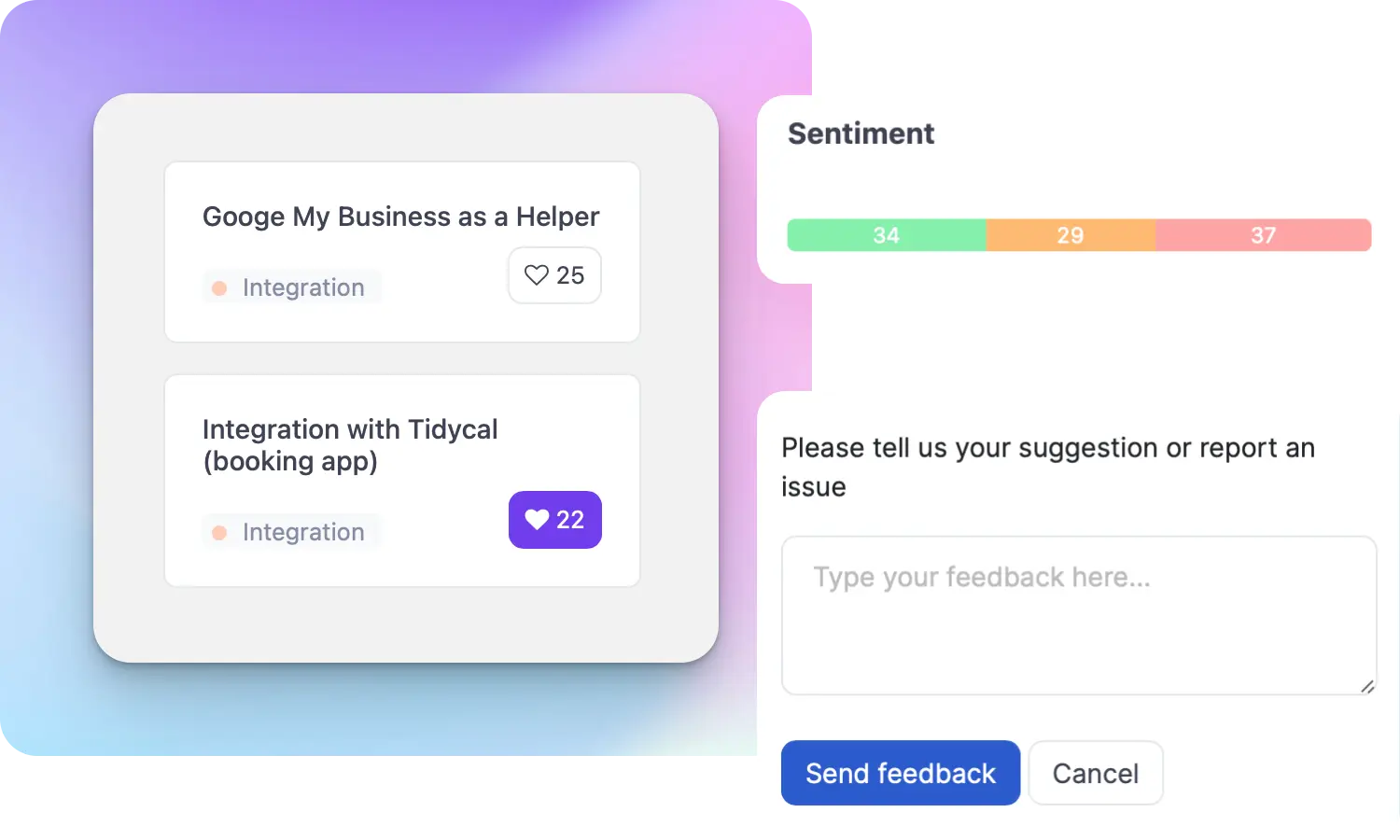How Customer-Led Growth Transformed My Approach to Product Management

Ruben Buijs
As a product management consultant with over a decade of experience at Ernst & Young, I've seen firsthand how putting customers at the center of your business decisions can be a game-changer for growth. This is the essence of customer-led growth (CLG) - a strategy that leverages deep customer insights to guide every aspect of your business, from product development to marketing and sales.
In my current role as the founder of ProductLift, a product feedback and roadmapping tool for SaaS companies, I've fully embraced the CLG philosophy. It's transformed the way we build and market our product. In this article, I'll share my journey with CLG, the frameworks we use at ProductLift, and how you can implement this powerful growth strategy in your own organization.
Table of contents
- Why Customer-Led Growth Matters
- Frameworks for Implementing CLG
- Jobs-to-be-Done (JTBD)
- Customer Feedback Loops
- North Star Metric
- Putting CLG into Practice
Why Customer-Led Growth Matters
Traditional growth strategies often focus on aggressive sales tactics, flashy marketing campaigns, or building features based on gut instinct. While these approaches can drive short-term gains, they often fail to create sustainable, long-term growth.
That's where CLG comes in. By making the customer the focal point of your growth strategy, you ensure that every decision - from the features you build to the messages you put out - is grounded in real customer needs and desires. This leads to products that practically sell themselves, more effective marketing, and ultimately, loyal customers who stick around for the long haul.Some key benefits of CLG that I've experienced firsthand include:
-
Improved product-market fit: By deeply understanding your customers and building features they actually want, you create a product that seamlessly fits into their lives and solves real problems.
-
Increased customer loyalty: When customers feel heard and see their feedback shaping your product, they develop a strong sense of investment and loyalty to your brand.
-
More efficient growth: CLG enables you to focus your resources on the initiatives that will drive the most impact for your customers, leading to more sustainable and capital-efficient growth.
Frameworks for Implementing CLG
Implementing CLG requires a fundamental shift in how you approach growth. It's not just about collecting customer feedback - it's about weaving those insights into the fabric of your decision-making. Here are some of the frameworks we use at ProductLift to make CLG a reality:
Jobs-to-be-Done (JTBD)
The JTBD framework is all about understanding the underlying "job" or problem your customer is trying to solve when they use your product. By framing your product in terms of the customer's job-to-be-done, you can build features and craft messaging that directly address their needs.
For example, at ProductLift, we realized that the core job our customers were hiring us for was to make sense of the deluge of feedback they were receiving and translate that into an actionable roadmap. This insight has guided our product development, leading to features like AI-powered feedback analysis and easy roadmap prioritization.
Customer Feedback Loops
Closing the loop with customers is a critical component of CLG. This means not just collecting feedback, but actually acting on it and communicating those actions back to your customers.
At ProductLift, we've baked customer feedback loops right into our product. Customers can submit ideas, vote on features, and see the status of their requests right in the app. We also make a point to regularly share updates on how we're using customer feedback to shape our roadmap. This transparency builds trust and keeps customers engaged in our growth journey.
North Star Metric
Your North Star Metric (NSM) is the single metric that best captures the value your product delivers to customers. Under a CLG strategy, your NSM should be directly tied to customer value, not just business outcomes.
For us, our NSM is the number of customer insights that are successfully translated into roadmap priorities. This keeps us laser-focused on delivering value to our customers and helps align our entire team around this shared goal.
Putting CLG into Practice
Transitioning to a CLG strategy doesn't happen overnight - it requires a concerted effort to reorient your team and processes around the customer. Here are some steps you can take to start making the shift:
-
Invest in customer research: CLG starts with a deep understanding of your customers. Conduct interviews, surveys, and user testing to uncover insights about their needs, behaviors, and pain points.
-
Break down silos: CLG requires tight alignment between teams, especially product, marketing, and customer success. Establish cross-functional collaboration and ensure customer insights are shared widely.
-
Tie metrics to customer value: Reframe your KPIs around metrics that reflect the value you're delivering to customers, like adoption of key features or successful outcomes achieved.
-
Empower your team with the right tools: Implementing CLG at scale requires tools that help you collect, analyze, and act on customer feedback efficiently. This is where a tool like ProductLift can be invaluable, streamlining the feedback-to-roadmap process.
At ProductLift, embracing CLG has been transformative for our growth. By putting our customers at the heart of everything we do, we've been able to build a product that truly resonates, foster deep customer loyalty, and fuel sustainable growth. While the CLG journey isn't always easy, the payoff - in both customer love and business results - is well worth it.
If you're a product manager looking to put CLG into action, I invite you to check out ProductLift. Our tool makes it easy to collect customer feedback, prioritize your roadmap, and close the loop with customers - all essential components of a winning CLG strategy. Start your free trial today and see the power of customer-led growth firsthand.






